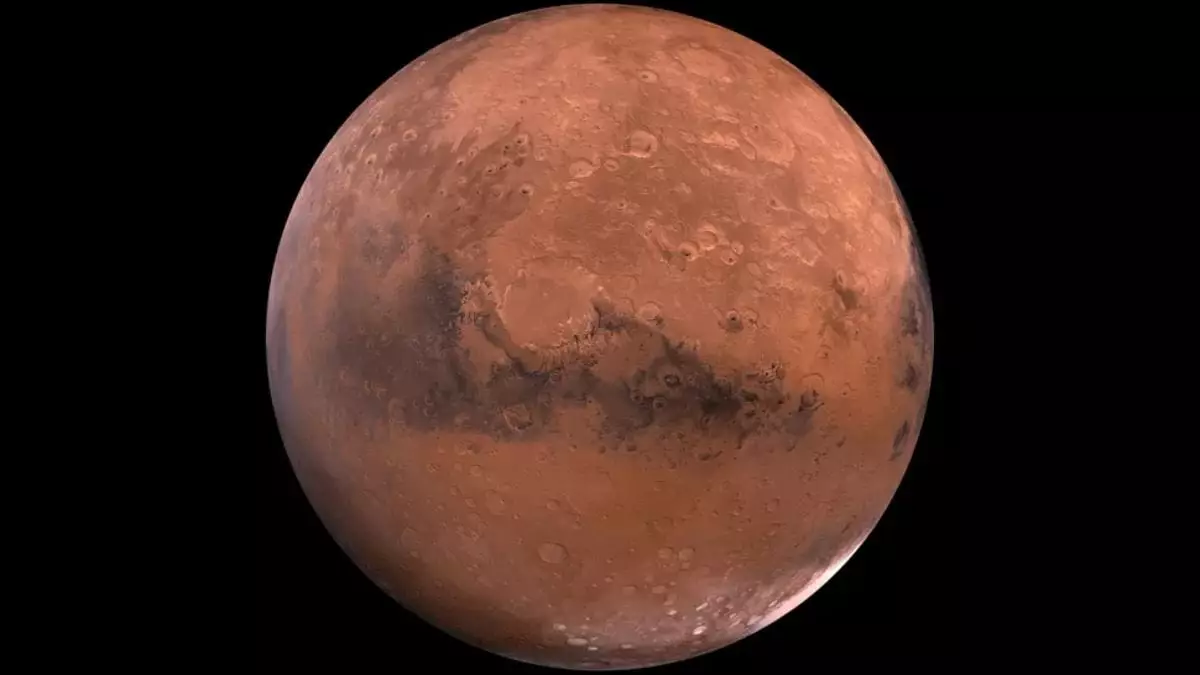Mars, once thought to be a barren wasteland, is emerging as a planet that perhaps mirrors our own past. The tantalizing findings from NASA’s Perseverance rover serve as a reminder of the rich history hidden beneath the Martian surface. It is no longer sufficient to dismiss Mars as a cold remnant of the solar system; rather, compelling evidence suggests that it was teeming with rivers and lakes, a face that closely resembles the lush Earth we inhabit today. This revelation is not just a scientific curiosity but a profound paradigm shift in our understanding of planetary evolution, merging the lines separating the Red Planet from its blue counterpart.
The journey of discovery has been meticulously documented, with researchers highlighting striking geological features. The evidence presented in recent studies posits that Mars, approximately 4 billion years ago, was likely warmed by a climate supportive of liquid water—a reservoir of potential life. By re-examining past assumptions that viewed early Mars as primarily icy and inhospitable, scientists are now uncovering a narrative where precipitation could have sculpted the Martian landscape dramatically, yielding rinsing valleys and deep deltas reminiscent of Earth’s own rivers.
Scientific Puzzles and Climatological Enigmas
Yet, as scientists fervently explore these possibilities, they encounter a captivating enigma: where exactly did all this water come from? The prevailing climate models indicate a state unfriendly to liquid water, raising eyebrows among researchers who find it challenging to reconcile the data with the current understanding of Martian conditions. Even Amanda Steckel, a key figure in this ongoing investigation, concedes that while the evidence is compelling, conclusive pronouncements elude them. The question of how Mars maintained conditions suitable for liquid water amid its known climate extremes remains unresolved.
The intrigue thickens with advanced simulations offering multiple scenarios of Mars’ nascent climate. Steckel and her team, using Earth-centric models as their starting point, adapted their parameters to envision a warm and wet Mars during the Noachian epoch. By investigating this climate framework, they illustrate a previously unimaginable tableau where rivers flowed into expansive lakes, perhaps even forming an ocean—an image that conjures up a vision of Mars far more alive than its current state. This imaginative leap is invaluable not only for understanding Mars but also for drawing parallels to Earth’s primordial conditions.
Bridging Earth and Mars: Lessons from the Cosmic Neighbors
As researchers delve into the depths of this Martian mystery, the outlook broadens, inviting contemplations that stretch beyond the confines of our solar neighborhood. What can ancient Mars teach us about Earth’s tumultuous history? The interplay between climate dynamics and geological evolution showcases how liquid water can sculpt worlds in ways previously deemed inconceivable. This exploration invites a re-evaluation of our own planet’s climatic narratives and the implications they have for how humanity perceives its environmental stewardship.
The juxtaposition of Mars’ potential past and the present-day repercussions of climate change on Earth underscores a dire warning: the delicate balance that sustains life can shift dramatically. If Mars can evolve from a planet rich in water to the desolate landscape we see today, it epitomizes the fragility of cosmic conditions. It is incumbent upon us, as stewards of Earth, to heed this lesson and take proactive measures to safeguard our climate before it is too late.
In a world increasingly defined by political divides, embracing the spirit of exploration can unite those across ideological lines in shared awe and responsibility. Space exploration ignites a collective curiosity that transcends the mundane concerns of earthly discourse, drawing humanity into a broader cosmic narrative. As we unravel the history of Mars and its watery past, our understanding of Earth—our shared home—becomes more nuanced, instilling a sense of wonder, urgency, and interconnectedness that we desperately need as we face an uncertain future.


Leave a Reply